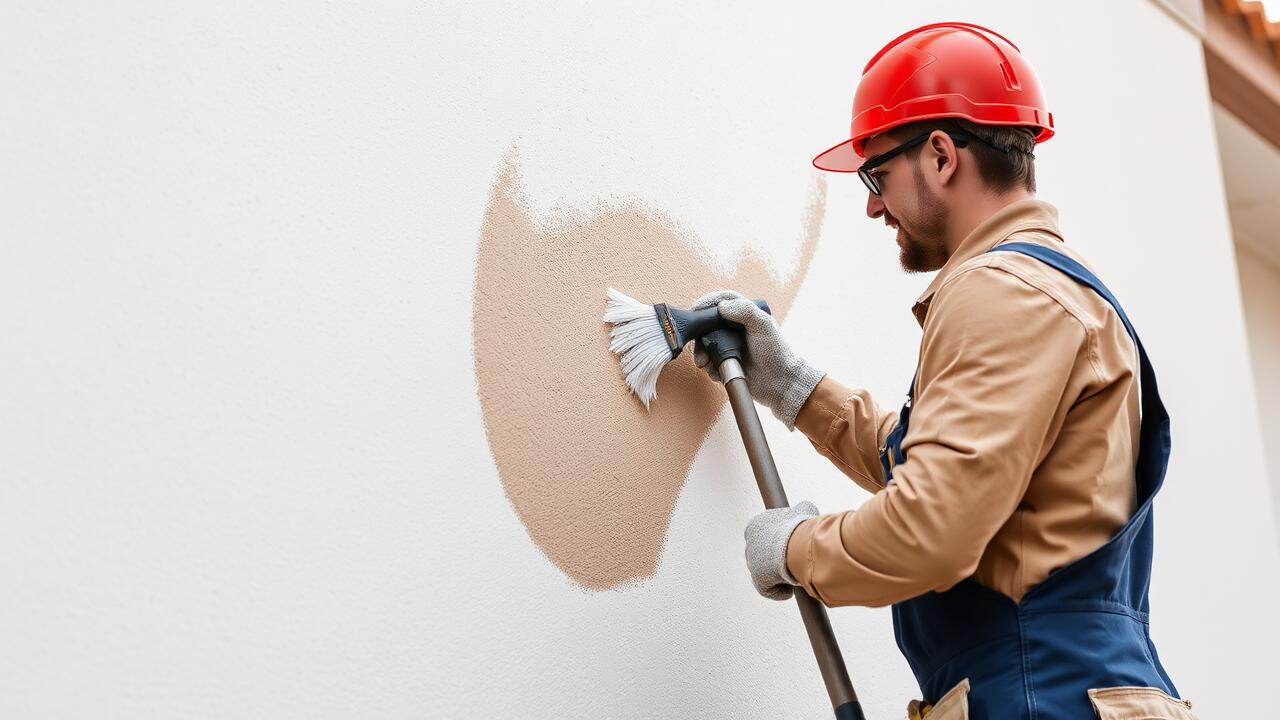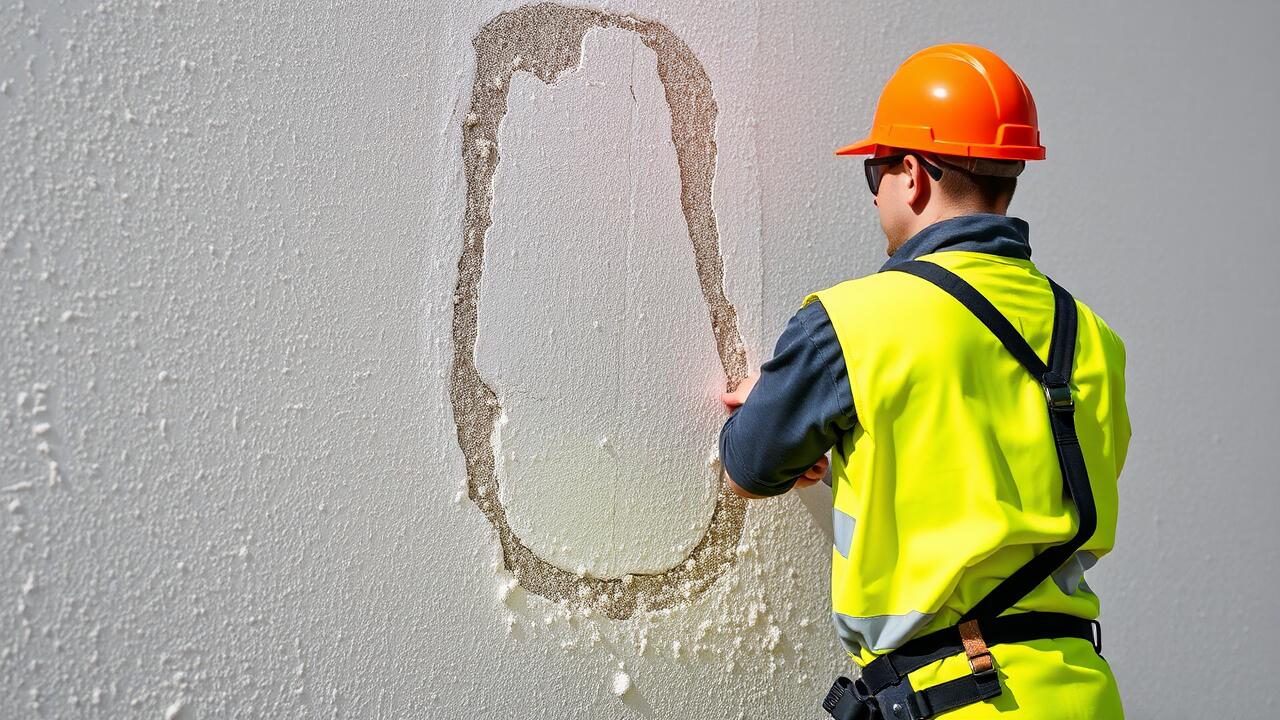
Recommended Paint Types for Stucco
When selecting paint for stucco surfaces, it is crucial to choose materials that are specifically formulated for textures and materials such as stucco. Acrylic latex paints are often recommended due to their durability and breathability, which allow moisture to escape while preventing damage to the underlying surface. These paints can withstand the elements and are available in a variety of finishes and colors, making them suitable for various architectural styles and personal preferences.
For those considering a painting project in areas like Stucco Painting West Adams, Los Angeles, elastomeric paint stands out as another great option. This kind of paint has a thicker consistency and provides excellent coverage, which is beneficial for older or damaged stucco. Its flexibility helps bridge small cracks, preventing water infiltration and prolonging the overall lifespan of the paint job.
Comparing Different Paint Options
When considering paint options for stucco, both acrylic and elastomeric paints provide excellent choices. Acrylic paints offer good adhesion and flexibility, making them suitable for various climates. They are also available in a wide range of colors and finishes, allowing for customization. On the other hand, elastomeric paints create a thick, flexible layer that can help bridge small cracks and protect against water infiltration, making them particularly beneficial for older stucco surfaces.
Homeowners in areas like Brentwood, Los Angeles, should take into account local weather conditions when selecting paint. Humidity and temperature fluctuations can influence the performance of the chosen paint. It's crucial to select a product that can withstand the unique environmental challenges posed by living in this coastal region. Proper preparation and paint selection can ensure a long-lasting, aesthetically pleasing finish for stucco surfaces.
Tools Needed for Priming and Painting Stucco
When preparing for a stucco painting project, having the right tools is crucial for achieving a professional finish. A power washer is essential for cleaning the stucco surface, removing dirt and any loose paint. A wire brush or scraper may also be needed to address any peeling areas. After cleaning, a quality primer specifically designed for stucco surfaces should be used, which can help enhance adhesion for the topcoat. For the actual painting, consider using a paint sprayer for larger areas to ensure an even application, along with roller sleeves designed for textured surfaces.
In addition to the tools for cleaning and painting, it's vital to have a few other accessories on hand. Drop cloths will protect areas around the home from paint splatters, while painter's tape will help create clean lines on windows and trim. Using a sturdy ladder or scaffold will ensure safe access to all areas of the stucco surface. If you're considering a project in your area, local services for Stucco Painting Sherman Oaks, Los Angeles, can provide guidance on both tools and techniques to use for the best results.
Essential Equipment for a Successful Job
When embarking on stucco painting projects, having the right tools is crucial for achieving a professional finish. A high-quality paint roller and a sturdy extension pole can make applying paint much easier on textured surfaces like stucco. Brushes with stiff bristles are essential for reaching crevices and corners where rollers cannot reach effectively. In addition to these tools, a sturdy ladder may be necessary for higher elevations, ensuring you can work safely while achieving even coverage across the entire surface.
For those in need of a comprehensive option, a high-capacity airless paint sprayer can significantly speed up the process. This equipment efficiently coats large areas and provides a uniform finish. Additionally, using drop cloths will help protect surrounding areas from paint splatters. Whether you’re planning a DIY project or seeking professional assistance with stucco painting Sherman Oaks, Los Angeles, these tools will contribute to a successful and polished outcome.
Maintenance Tips After Painting Stucco
Regular maintenance is vital for ensuring the longevity and appearance of freshly painted stucco. Periodic inspections can help identify cracks or peeling spots that may need touch-ups. Keeping the surface clean by gently washing it with a mild detergent can prevent dirt buildup and extend the life of the paint. For those living in areas like Stucco Painting Downtown Los Angeles, Los Angeles, it's essential to consider the impact of the local climate, which can affect how often maintenance is needed.
After painting, allow the surface to fully cure before subjecting it to harsh weather conditions. If possible, avoid exposing the stucco to moisture for at least a week following the application. In regions where the sun can be particularly intense, using a UV-protective sealant can help preserve the paint’s vibrancy. Touching up any minor imperfections promptly can further enhance the overall look and resilience of your stucco facade.
How to Keep Your Stucco Looking Fresh
Regular maintenance plays a crucial role in preserving the beauty of stucco. Periodic cleaning with a mixture of water and mild detergent can remove dirt and mildew. A soft brush or sponge works well for gentle scrubbing without damaging the surface. Avoid harsh chemicals that can deteriorate the stucco finish. Rinsing thoroughly is essential to remove all soap residue.
Inspecting the stucco for cracks or signs of wear should be part of your maintenance routine. Addressing these issues promptly can prevent further damage and deterioration. When it comes to repainting, know when to hire professionals, especially for tasks like Stucco Painting Chatsworth, Los Angeles. Regular touch-ups help maintain the appearance and prolong the life of your stucco surface.
FAQS
Should I prime old stucco before painting it?
Yes, priming old stucco before painting is highly recommended. It helps create a better bond between the paint and the surface, ensuring a more durable finish.
What type of primer is best for stucco?
A high-quality acrylic or latex primer is generally best for stucco surfaces, as it adheres well and allows for flexibility, which is important for the porous nature of stucco.
How do I prepare old stucco for painting?
To prepare old stucco for painting, clean the surface thoroughly to remove dirt and mildew, repair any cracks, and allow it to dry completely before applying primer.
Can I skip priming if I use a paint-and-primer-in-one product?
While paint-and-primer-in-one products can save time, they may not provide the same level of adhesion and coverage on textured surfaces like stucco. Priming is still advisable for the best results.
How often should I repaint stucco?
It is typically recommended to repaint stucco every 5 to 10 years, depending on the climate, exposure to the elements, and the quality of the paint used. Regular inspections can help determine the right timing.



